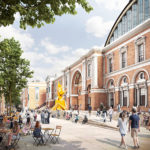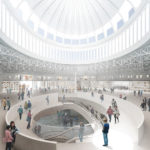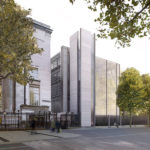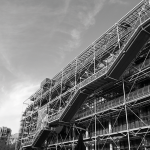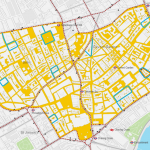The flip side of memorable pedestrian entrances
Museums, galleries, heritage properties and estates are known and easily recognisable for their grand public entrances. These provide a memorable experience for visitors before they even set foot in a building. Visitors then embark on a cultural journey, obtaining tickets and information, looking at various displays, and finishing their visit by a stop at the café or the shop.
But for this journey to happen seamlessly, careful planning, design and operational management goes into getting goods, artefacts and all the necessary items without which these institutions wouldn’t run via alternative access points. These logistics routes seek to minimise the interactions of often large vehicles with the wider public in order to increase the safety of pedestrians and the security for some of the very precious artefacts being displayed, reducing the conflicts between ‘front of house’ and ‘back of house’ activities.
A strategic approach to servicing
When space is not at a premium, loading areas can be created off-street within a cultural or heritage building. Hidden from public eyes, logistics hubs provide safe and secure spaces dedicated to receiving goods, and keep neighbours happy. The best operational logistics are those no one is aware of. When we work on masterplan projects, such as the Olympia Exhibition Centre in West London, we like to be involved from the start and get the chance to think or re-think servicing and deliveries, integrating the requirements for current operations and those created by proposed additional land uses.
Managed operating hours
Hours for the public are not necessarily the same as logistics hours – early or late deliveries outside of peak pedestrian hours can be scheduled to reduce undesirable interactions. This provides the additional benefit of limiting traffic to times where it’s less congested, alleviating pressure on roads for the necessary journeys that keep cities moving. We are working with the Museum of London and supporting the design team to develop the logistics strategy for the new West Smithfield site. This will necessitate careful planning of vehicle movements to avoid conflicts with high quality public realm to be created for the Museum and nearby Culture Mile.
Connected spaces
Once items are delivered by vehicles to a loading area, their journey does not stop. Goods are then moved into different areas of a building, from maintenance, restoration and storage rooms to exhibition spaces, labs or offices. Cultural institutions are also places of work and research, where engaging with staff and facilities manager is key to developing successful operations. For our work for the British Museum World Conference and Exhibition Centre, we collaborated with various departments to discuss and understand delivery protocols, research materials, security, booking systems, banksmen procedures and on-site safety strategies.
Getting it right first time
Everything we do is designed and tested with a variety of engineering and analytical tools, including a range of static and dynamic modelling techniques to consider different scenarios and provide space effective solutions that work in the long term. This allows us to develop creative ideas to ensure the public, the workforce and the wider communities altogether fully enjoy the benefits of cultural institutions.
